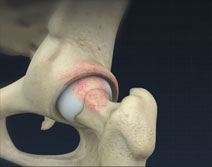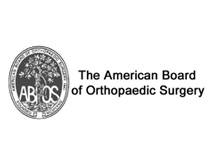Femoral Osteoplasty

What Is Femoral Osteoplasty?
Femoral osteoplasty is the surgical reshaping or alteration of your femur (thighbone). The surgery is required if you have an abnormally shaped femoral head or neck which causes pain with hip movement.
Indications for Femoral Osteoplasty
Your doctor normally performs femoral osteoplasty if you have a condition called femoroacetabular impingement (FAI), a common cause of hip joint pain in young adults. Your hip joint is a ball-and-socket joint. FAI is often characterized by the formation of bone spurs on the femoral head (ball) or the socket (acetabulum) of the hip joint. These spurs are called cam lesions or pincer lesions.
A cam lesion is a bone spur formed on the femoral head (the ball) of the hip joint. When this occurs, your femoral head does not appear round but may have a bony bump on one side which contacts the socket abnormally on movement of the hip joint. This may cause injury to the cartilage lining the articular surfaces of the joint and can result in unbearable hip pain. Femoral osteoplasty can correct the abnormality and eliminate or reduce the pain.
Initially your doctor may recommend simple and non-operative measures such as rest, physical therapy, anti-inflammatory medications or certain types of injections to treat your condition. If conservative treatment measures do not improve the pain, surgery may be recommended called femoral osteoplasty.
Procedure for Femoral Osteoplasty
Femoral osteoplasty may be performed by:
- Open Osteoplasty:Your doctor makes an incision over the hip joint and removes the bone spurs under direct visualization
- Arthroscopic osteoplasty: A minimally invasive procedure performed through a few small incisions with the help of a narrow instrument called an arthroscope
Your doctor may choose the type of surgery depending on the severity and location of the abnormality. However, the less invasive arthroscopic procedure is normally preferred.
Arthroscopic Femoral Osteoplasty
During arthroscopic femoral osteoplasty, your doctor will:
- Access the hip joint through small incisions by inserting an arthroscope to identify the exact spot of the abnormality
- Use a shaver or a radio thermal device to remove excess bone on the femoral head or neck
- Remove any non-spherical portion of the femoral head
- Reshape the femoral head or neck to increase clearance in the joint
- Debride any unwanted tissue on or around the femoral head
- Conclude the procedure by suturing the incisions
The goal of the procedure is to relieve the pressure on the labrum, increase the clearance in the joint and improve the range of movement in the hip joint.
If the condition is more severe or in an area that cannot be reached by arthroscopy, your doctor may perform an open osteoplasty to:
- Dislocate your hip and remove the femoral spurs
- Repair torn cartilage if present
Following the procedure, your doctor will advise you on appropriate rehabilitation procedures to help you recover and return to daily activities.










